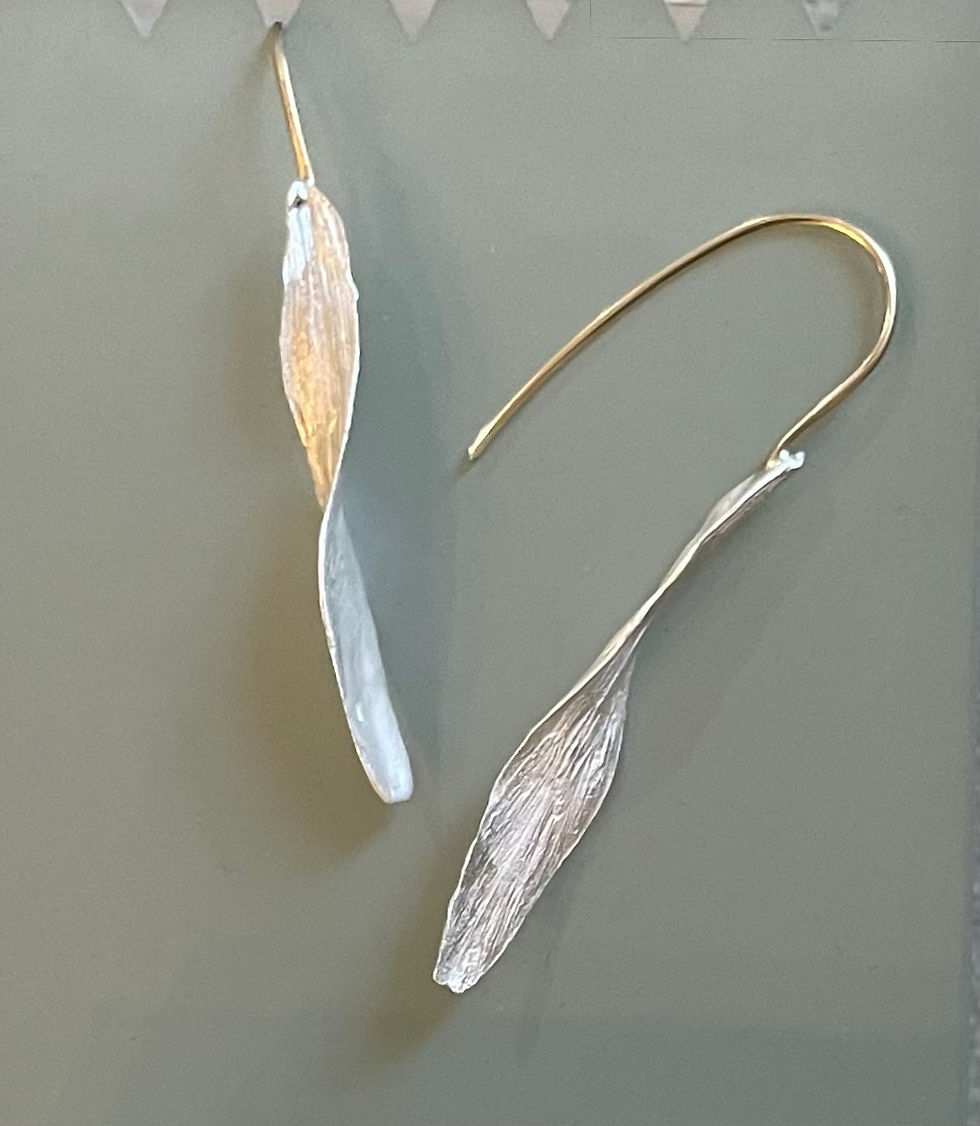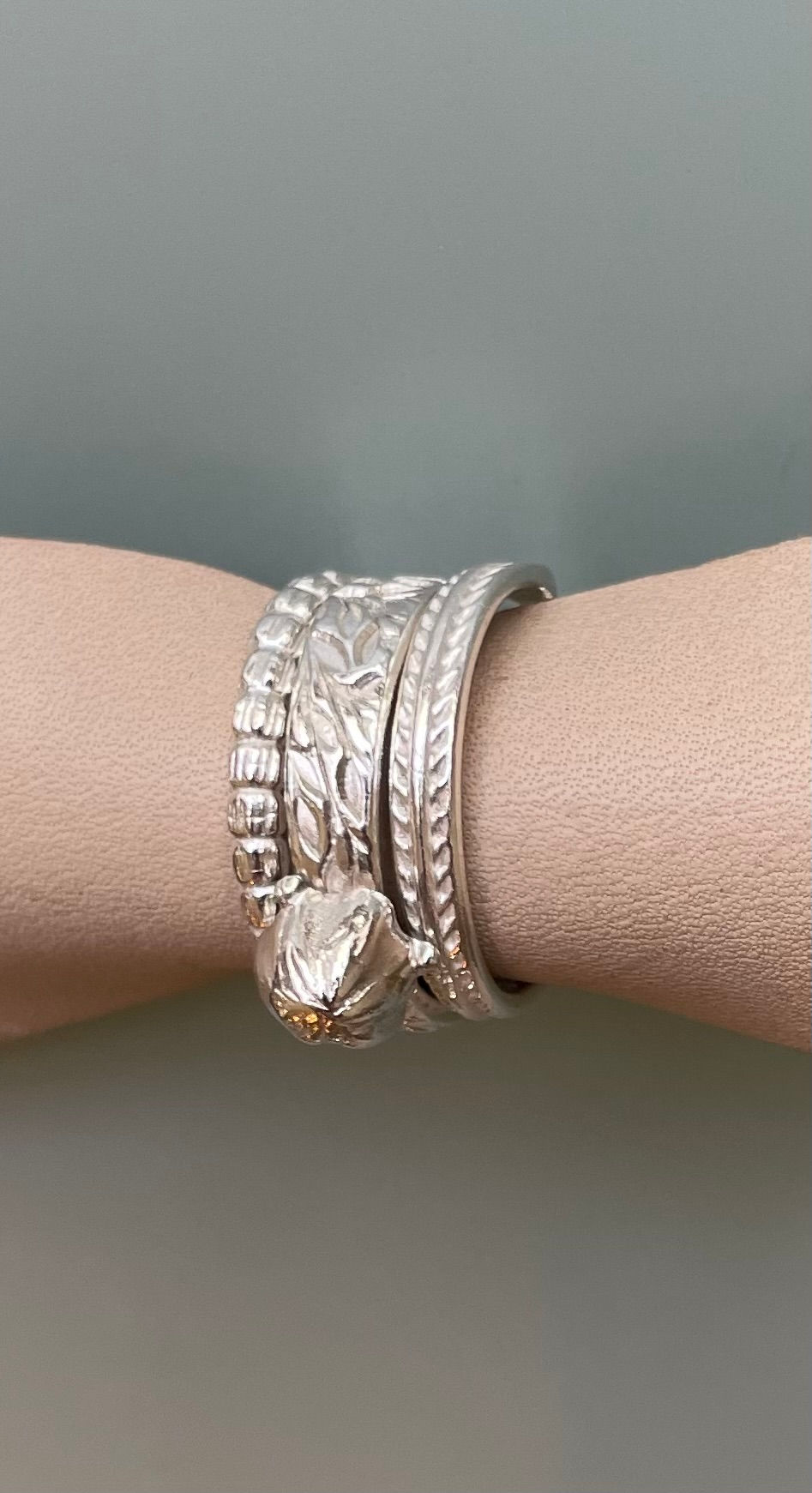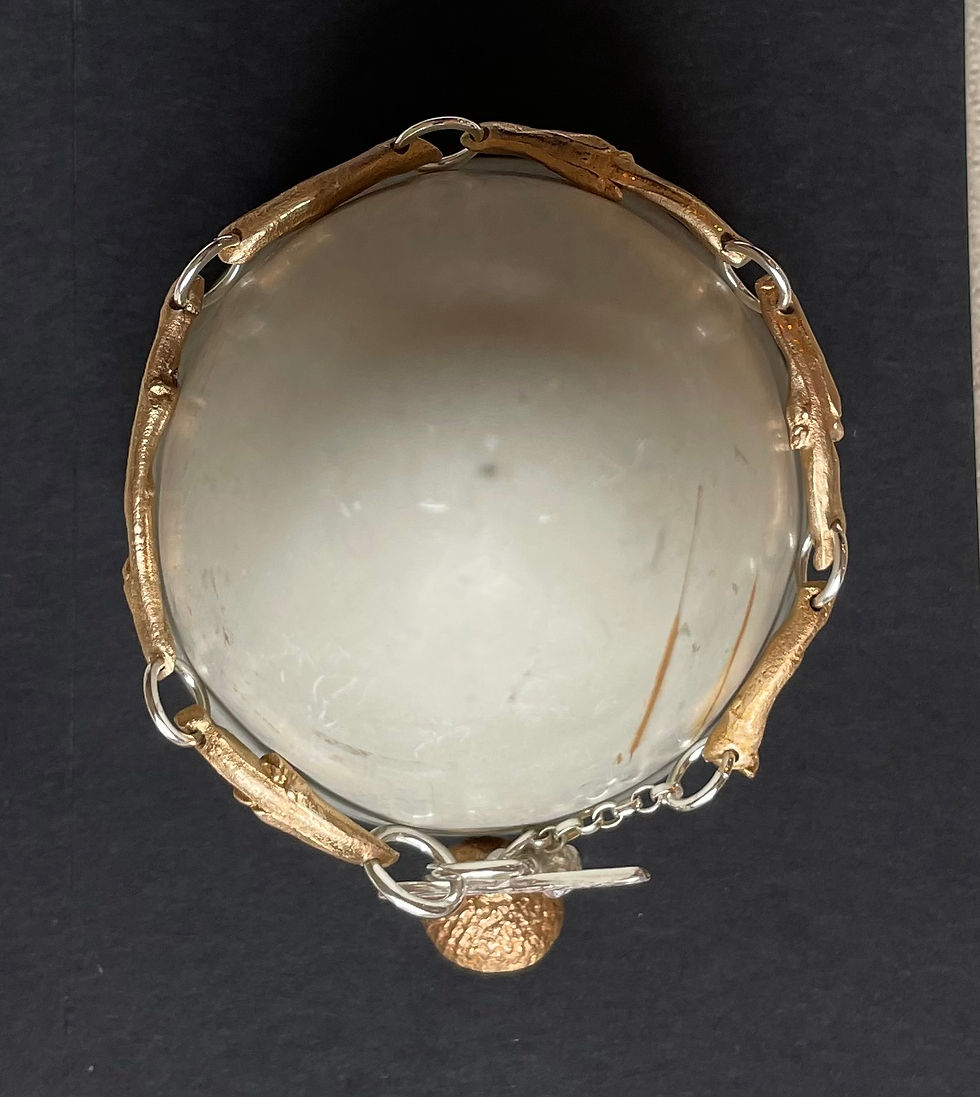
WELCOME
The delight of working in Darwin's House has also become an inspiration for Feretia designs - and workshops - with discoveries to share with you - and to offer unique historic links to the past.
Find stories behind
A majestic Downy oak and a garden primrose; one of Darwin's famous finches from the Galapagos; Darwin's exotic Madagascan orchid and it's relationship with a hawk moth; a species of coral.........and new this Spring, a focus on an original planting in Darwin's childhood landscape and still glorious - a cucumber tree!
Designed and created in studio for you choose and to wear - or - to come and experience a Darwin related workshop in precious metal clay, add a wonderful experience in this historic house to your story!

Magnolia Acuminata.
The Blue Magnolia or Cucumber Tree is an original planting in the courtyard of Charles Darwin's birthplace home. Very large and with abundant velvet foliage and stunning blue flowers. Glorious in Spring when in prolific flower, but beautiful year round. Feretia's new collection inspired right here. Tiny petals, leaf textures, stem and seed pods are all cast and take their place in the evolving story of this collection.
The Blue Magnolia from above, finishing to hover outside Feretia's studio windows.
Filmed by a talented professional and expert drone pilot within Darwin House.
With thanks to: Emily Jones.



Feretia's Darwin Downy Oak Collection
An ancient Downy oak still graces the front lawn of Charles Darwin's birthplace.
This tree, listed in the National Tree Registry as the most magnificent example of the species in the British Isles, is the inspiration for this special collection.
Leaves from the tree are transformed into fine silver, bark is cast and curled into rings, acorn cups carefully cast and worked into contemporary classic pieces to enjoy.





































































